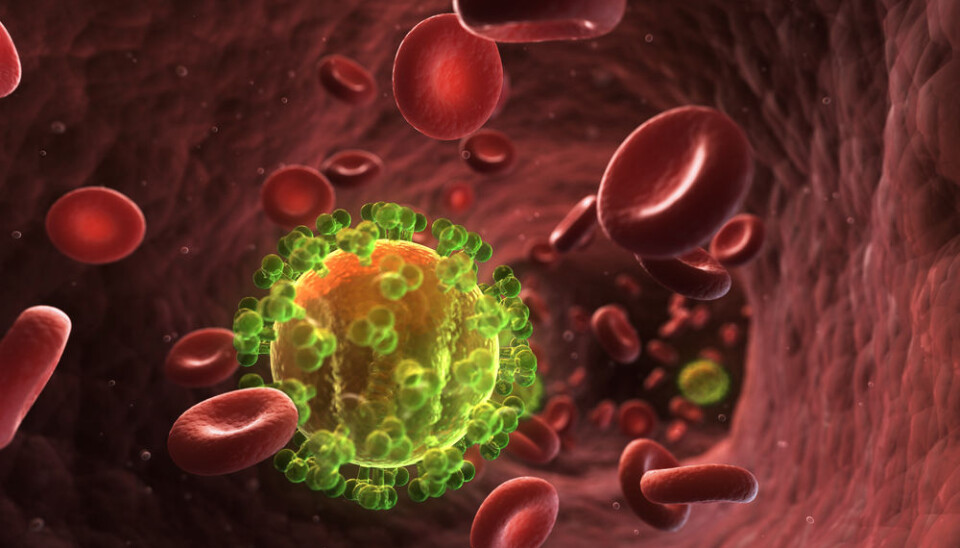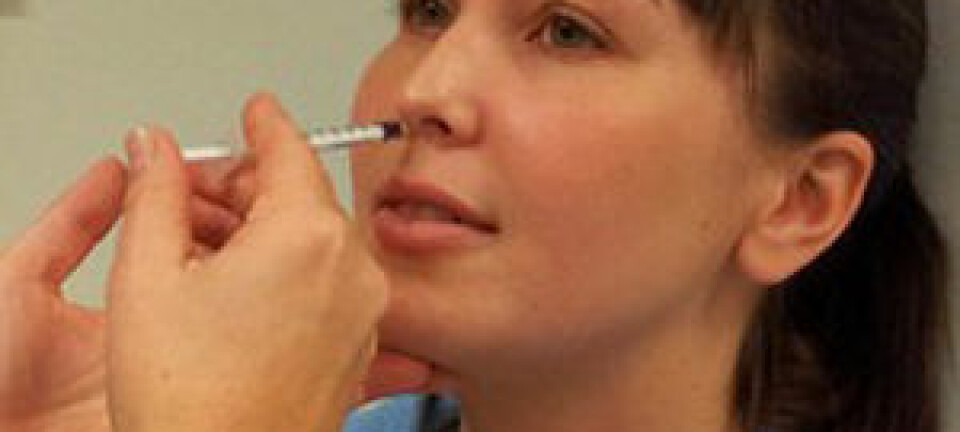
Researchers find body’s HIV alarm
For the first time, researchers describe how our immune system detects HIV. Boosting ‘alarm proteins’ could clear pathway for future treatments.
Researchers have unlocked a mechanism behind how our body goes into alarm mode when HIV virus invades our cells.
A special ‘alarm protein’ detects strings of HIV DNA, triggering an immune response before the virus has time to take over the cell.
HIV was observed to replicate faster in cells deprived of the alarm protein, proving the protein’s crucial role in containing virus spread.
New understanding could pave way for better treatment of the deadly virus in near future, suggest scientists.
No cure but could be a HIV brake
The protein we’ve discovered is like a speed bump on the road which slows down the virus. By making the bump bigger we could, in theory, slow the virus in spreading,
An international study has provided new insight into how the body’s own defence combats the human immunodeficiency virus (HIV).
“We’ve discovered a protein that triggers the initial immune response when the HIV virus forces its way into a cell,” says the lead author of the study, Martin Roelsgaard Jakobsen, an associate professor at the Department of Biomedicine at Aarhus University, Denmark.
Although HIV-caused deaths have been on steady decline globally since 2005, scientists are still struggling to find a cure for the deadly virus that claims more than 1.5 million lives every year.
The new research makes no promise of a cure but it could provide doctors with new means to fight the disease, says Jakobsen, who headed the international study together with Professor Søren Riis Paludan from Aarhus University.
What needs to be done here and now is to explore ways to boost the activity in the innate immune system,” says Jakobsen. “If we can solve that riddle – which will not be easy – then we’ll have fresh blood in the fight against HIV.
Jakobsen explains:
“If you use the analogy that a spreading HIV infection is a car driving along the road – your body’s cells – then the previous method of treating HIV was to try and destroy the car itself.”
Existing HIV treatments specifically target enzymes key to the virus’ replication process – Jakobsen and Paludan’s analogy would be trying to puncture the tires or smash the windows on the car.
“But the protein we’ve discovered is more like a speed bump on the road which slows down the car. By making the bump bigger we could, in theory, slow the virus in spreading,” says Jakobsen.
Alarm proteins set innate defense in motion
The HIV ‘alarm’ discovered by Jakobsen and Paludan is known as the IFI16 protein.
Previous studies have demonstrated the protein’s role in sensing intruding bacteria and viruses but this is the first time IFI16 is linked directly to HIV.
“IFI16 is special because it can detect foreign DNA in cells. When it does it triggers an anti-reaction which acts as a danger signal to our innate immune system,” says Jakobsen.
Upon alarm, the innate immune system ups its production of interferons – defence proteins programmed to inhibit the virus from establishing itself in the body – and within hours, interferons are bombarding the infected cell and its neighbours.
The increase in interferon activity eventually triggers another part of our build-in defences against hostile microorganisms: the adaptive immune system.
Early ignition of immune system is key to HIV fight
Unlike the innate system, the adaptive immune system is in it for the kill, releasing specialised proteins to eliminate the unwelcome guests. When successful, the information is stored in our system so it is loaded for the next time a similar virus or bacteria feels lucky.
This is known as acquired immunity, which is also why the adaptive immune system is sometimes referred to as the ‘acquired immune system’.
But it doesn’t work against HIV.
Yet, almost all HIV therapies focus on strengthening the adaptive immune system, says Jakobsen, who argues that more research should be put into studying the innate system.
“The very first response has to take place in the very cell where the foreign DNA is detected,” he says. “The sooner we can activate the innate system the harder it will be for a virus like HIV to establish itself in the body.”
And that makes the IFI16 protein an essential piece in the battle against HIV, he says.
HIV infection accelerates when protein absent
Establishing IFI16’s vital role in the body’s response to an HIV infection was divided into two experiments.
Firstly, Jakobsen and Paludan recreated the scenario of the HIV virus hijacking macrophages, a type of cells specific to the immune system, to see if IFI16 would trigger an alarm upon detection of the virus.
It did.
Then they started injecting HIV viruses into macrophages deprived of IFI16 to see what would happen.
It turned out that the absence of the alarm protein enabled the HIV virus to replicate faster – IFI16 would seem to regulate the infection, says Jakobsen.
“It’s not difficult to imagine that this could imply that people with less IFI16 are more susceptible to HIV infections. But this is purely hypothetical speculation,” he says, emphasising the last part.
Novel HIV treatment further down the road
Jakobsen and Paludan suggest scientists place a greater effort on understanding the innate immune system’s role in combating HIV.
“What needs to be done here and now is to explore ways to boost the activity in the innate immune system,” says Jakobsen. “If we can solve that riddle – which will not be easy – then we’ll have fresh blood in the fight against HIV.”
But that lies some years down the road, he adds.
Professor Jens Lundgren, the head of the Copenhagen HIV Programme at Copenhagen University and Rigshospitalet, agrees with that sentiment but stresses that HIV researchers around the world are aware of the innate immune system’s important role.
“However, the study provides a completely new understanding of protective mechanisms in macrophages and how these cells reacts to and affects the viral replication,” says Lundgren.
“Developing ways to stimulate the innate immune system might prove of value in future treatments. And while it will take us some time to get there, a basic understanding of cellular and molecular mechanisms often paves the way for new medicine.”
Actually, most of the HIV medicine we use today was developed like this, he adds.
----------------------
Read the Danish version of this article at videnskab.dk
Translated by: Kristian Secher






